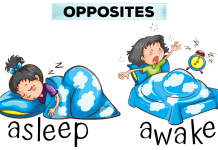
When it comes to effective communication in English, it’s crucial to differentiate between words that might sound similar but have distinct meanings. Often, the nuances in language can lead us to confuse synonyms, or in this case, homophones. To distinguish successfully and compare and contrast terms such as ‘very’ and ‘vary’, one must understand the differences they hold. ‘Very’, enhancing expressions with intensity, hones the impact of descriptions, while ‘vary’, reflecting the beauty of change, allows for diversity and adaptation.
Are you ready to explore these differences in depth? Let’s dive into the subtleties that separate ‘very’ and ‘vary’, clearing up common mix-ups and enriching your command over the English language.
Exploring the Definitions of Very and Vary
When we delve into the complex, yet fascinating English language, we encounter words like very and vary—homophones that are so often the root of various language mix-ups due to their identical pronunciation. Understanding the precise usage of these words is essential for the richness and accuracy of one’s vocabulary. As such, this section sheds light on their distinct meanings and the contexts in which they come into play.
The Homophonic Nature of Very and Vary
The English language is replete with homophones, and the words very and vary are a classic example. Despite sounding very similar, they diverge significantly in meaning. Misunderstanding these two could lead to a change in the intended message, illustrating the importance of grasping the nuances of homophones to avoid any potential mix-ups.
Very: Emphasis and Precision in Language
The word very stands as a robust tool for emphasis. It plays a dual role as both an adverb and adjective, aimed at enhancing the degree or stressing the authenticity of its subject. This adverbial and adjectival powerhouse serves to provide precise emphasis on qualities, conditions, or actions, magnifying their perceived intensity or authenticity.
The Dynamic Verb Vary and Its Applications
Conversely, vary is a verb that embodies the essence of change and diversification. It is a dynamic term that implies to modify, diversify, or alter something in order to introduce variability, making it versatile in contexts ranging from scientific study variations to the daily dynamics of human activity.
Both very and vary contribute uniquely to the vibrant tapestry of English expressions, demonstrating that even subtle differences in vocabulary can vastly modify the message. Here is a comparison that highlights their distinct uses:
| Term | Function | Example |
|---|---|---|
| Very | Adverb/Adjective | She was very excited about her birthday party. |
| Vary | Verb | The menu options vary each day to provide diversity. |
Through these explanations, it becomes clear that while they may vary in function, the words very and vary are integral parts of language, enabling a dynamic method of expression that fuels the power and beauty of communication. By mastering their definitions and proper usage, one can substantially enhance their linguistic prowess and articulate thoughts with greater precision and emphasis.
Very vs Vary: Contextual Usage and Examples
The essence of mastering language skills lies in the precise and accurate use of vocabulary. The contextual usage of ‘very’ and ‘vary’ vividly illustrates this point. When you assert that a chef’s dish is very delicious, the word ‘very’ serves to amplify the adjective, implying that the food isn’t just tasty; it’s exceptionally so. Should a person announce they are very excited about an upcoming concert, it’s understood that their excitement is at a peak level, beyond the ordinary. These examples showcase how ‘very’ robustly communicates intensity and precision, which can be instrumental in ensuring the clarity of a message.
In a different arena of expression, ‘vary’ introduces the concept of change and diversity. Painters, for instance, might vary their color palette to lend a unique vibrancy to each piece, avoiding monotony. Similarly, educators may recognize that their students’ learning styles vary significantly, necessitating a diverse range of teaching methods. When used correctly, ‘vary’ encapsulates the alterations and range found within a context, facilitating a recognition of variety and adaptability that can enrich any discussion or project.
Grasping the subtle differences between ‘very’ and ‘vary’ through contextual examples equips individuals with enhanced communicative prowess. Accurate usage of these terms not only avoids common language pitfalls but also elevates one’s expressive capability. As we navigate conversations and writings, the power of ‘very’ to intensify and the dynamism of ‘vary’ to diversify should be wielded with confidence and understanding, ensuring effective and engaging communication.
FAQ
Q: What is the main difference between ‘very’ and ‘vary’?
A: The main difference is that ‘very’ is used as an adverb or adjective for emphasis or intensification, while ‘vary’ is a verb that means to introduce change or diversity.
Q: Can you give an example of how to use ‘very’ correctly in a sentence?
A: Certainly! For example, “She was very pleased with the results of the project,” uses ‘very’ to emphasize the degree of her pleasure.
Q: How would ‘vary’ be correctly used in a sentence?
A: An example of using ‘vary’ correctly would be, “The daily specials at the cafe vary to keep the menu exciting.”
Q: Why is it important to differentiate between ‘very’ and ‘vary’?
A: Distinguishing between ‘very’ and ‘vary’ is important to prevent language mix-ups and to communicate your message with clarity and precision.
Q: How can one remember the distinction between ‘very’ and ‘vary’?
A: One method is to remember that ‘very’ is related to ‘verity’, which means truth and is used to emphasize something true or intense, while ‘vary’ is synonymous with ‘variety’, which involves change or diversity.
Q: Are ‘very’ and ‘vary’ considered synonyms or homophones?
A: ‘Very’ and ‘vary’ are not synonyms; they are homophones, which means they sound the same when spoken but have different meanings and spellings.
Q: Can ‘very’ and ‘vary’ be used interchangeably in any context?
A: No, ‘very’ and ‘vary’ cannot be used interchangeably as they serve different functions in language and express distinct concepts.
Q: When should one use ‘very’ instead of ‘vary’?
A: Use ‘very’ when you want to emphasize a quality, degree, or the precision of something. For instance, “The soup was very hot,” uses ‘very’ to stress the high temperature of the soup.
Q: What does varying something imply?
A: Varying something implies introducing alterations or differences, thereby preventing uniformity or repetition, such as varying your workout routine to improve fitness results.
Q: Can ‘vary’ ever function as an adjective or adverb like ‘very’?
A: No, ‘vary’ is exclusively a verb. It does not function as an adjective or adverb. It’s used to describe the action of changing or diversifying something.

























